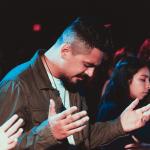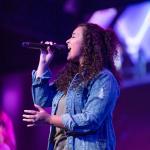When John first sees the heavenly worship as he ascends to heaven, the four living creatures take the lead with an unceasing Sanctus. The twenty-four elders fall down before the One on the throne, cast their crowns before the throne, and praise God for His glory, honor, and power. They are not singing, only “saying” (Revelation 4:8-11). They have no liturgical equipment or paraphernalia.
After the Lamb takes the book, they break out in worship again. The living creatures and the elders fall down together before the Lamb, and each one has a harp, and they all sing (5:8-9). Speaking praise has advanced to sung praise with instrumental accompaniment, because the Lamb takes the throne. Music breaks out when the Lamb comes. And the living creatures and elders also offer incense with prayer.
The same advance happens with the “great multitude” (7:9-12). Initially, they “say” their praise, and they have no instruments. After the harvest of the grain and grapes, however, saints stand on the sea of glass with harps to sing their praise (15:1-3).
Christian worship should mimic heavenly worship, so that God’s will is done on earth as in heaven. So, what does Revelation 4-5 imply about Christian worship that is predominantly “said” and not “sung”? What does it say about the prohibition of instrumental music in parts of the Reformed tradition? Are churches that reject instrumental music (unintentionally) denying that the Lamb is enthroned? And, are churches that refuse incense (unintentionally) saying the same thing?














